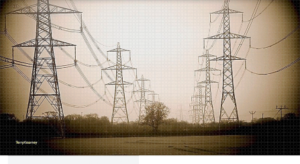Our electricity system
A tragedy of the commons Colin Cook
The Australian electricity system is in chaos; variously described as ‘a perfect storm’ (multiple quotes) ‘not a perfect system’ (Energy Minister, Chris Bowen), ‘a complete and utter mess’ (Melissa Clarke, ABC); but what to do? The vintage anecdote of a yokel’s advice to the traveller comes to mind; ‘How to get to Tipperary? Well now, I wouldn’t be starting from here’. But what also comes to my mind is the tragedy of the commons as described by William Forster Lloyd in 1833.
We may view this ‘common’ to be the population’s disposable income that they are prepared to allocate to electricity consumption, and ‘commoners’ grazing on this herbage as being all those commercial operators drawing income and profits from the system; the generators of all sizes and modalities, the owners of poles and wires and substations and their service contractors, the retailers. with their maddening variety of choice, plus insurers, market traders, risk assessors etc.

This is exactly the arrangement that Lloyd wrote about – access by multiple ‘graziers’ not constrained or limited by an agreed protocol but many seeking maximum/individual advantage – leading directly and inevitably to ’tragedy’. Can this be rectified to ensure a benign outcome? There is now a huge third party trying to control the system – AEMO (Australian Energy Market Operator) in cooperation with ESB, AER and AEMC (the Energy Security Board, the Australian Energy Regulator and the Australian Energy Market Commission respectively) but recently they have needed to resort to emergency measures. The network charge of AEMO has almost trebled in the new Financial Year, from 15c/kwh to 40c/kwh.
Can this commons be reconfigured to work smoothly and sustainably to yield desirable outcomes? Research in the last half-century has shown that there are many commons around the world that function well being able to transition from one generation to the next, smoothly matching needs and resources as circumstances change. But, in a phrase, ‘conditions apply’.
The conventional view of a commons is of a parcel land or other natural resource that is accessible to many people. Prolific Canadian author and modern advocate for the commons David Bollier insists that ‘The commons is not a resource. It is a resource plus a defined community and the protocols, values and norms devised by the community to manage its resources’. Such commons do not produce ‘tragic’ outcomes but give continuity and flexibility.
In further writings, Bollier makes clear that ‘the protocols, values and norms’ would essentially cover:
- The maintenance of the resource sustainability
- Equity in this activity
- Fairness in the benefits yielded sharing
- Sanctions to discourage freeloaders and disrupters
- Imposition of penalties as needed And it barely needs saying, the commoners are all ‘locals’
Against these criteria, the analogy of the consumer’s hip pocket as the resource and the commercial operators as the commoners rates very poorly. There is no community amongst the ‘commoners’ – they are in competition, many are foreign owned by no means ‘local’, there is no agreed protocol, let alone sanctions and penalties except those imposed by a third party – in theory huge, but legalistic, financial and slow. The third party trying to impose a set of ‘protocols, values and norms’, AMEO, ESB, AER, AEMC – does amazing work with a very complex set of regulations which aim to ensure continuity of supply at lowest feasible cost to the consumers; but these aren’t principle aims of ‘commoners’ who prioritise executive remuneration and ‘return to shareholders’.
In short, the present system cannot work for the very reasons set out by William Foster Lloyd -too many self interested ‘graziers’ feeding off a limited resource. The present commoners must be replaced with a set of locals having the shared objective of sustainability and service. The service we are referring to – essentially a monopoly public service – needs to be returned to public ownership.
But has Australia ‘painted itself into a corner’ for reversing the acts of privatisation of recent decades? The now well-entrenched concept of ‘competitive neutrality’ -currently ‘policed’, as a core function, by the Productivity.
Commission expressly precludes our governments from using their competitive advantage in competition with commercial corporations. And Investor/State Dispute Settlement Clauses in our many Free Trade Agreements hamper our Government in any legislation that might impinge on the profitability of a foreign investor. The networks in SA and VIC, for instance, are owned (51%) by a company based in Hong Kong and (49%) by what is described (Wikipedia) as a ‘private equity giant’ based in north America. These are formidable obstacles to overcome in a three-year term of government.
Shying away from outright nationalisation, some observers advocate extra or different regulations – the latest one being a ‘Capacity Market’ for which energy providers are paid to be available when the system requires them; with a failure to do so may incurring ‘huge penalties’. The extra costs, including penalties’ would be passed on to the customers. It is not unknown for the costs of third-party regulation to become prohibitive in contrast to protocols developed and agreed by the commoners; this is one of the factors of unsustainable commons.
Sooner or later, regardless of political ideology, we will be obliged to recognise that the tragedy of the commons applies to any public service monopoly that is opened to corporate ‘grazing’.
Colin Cook is an ERA member.



























